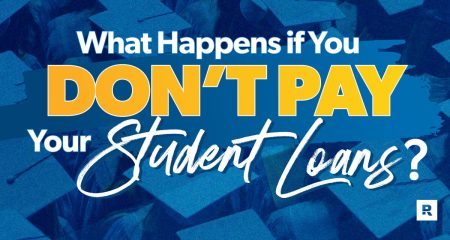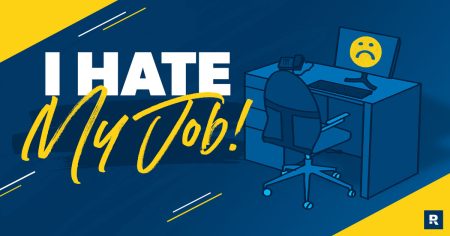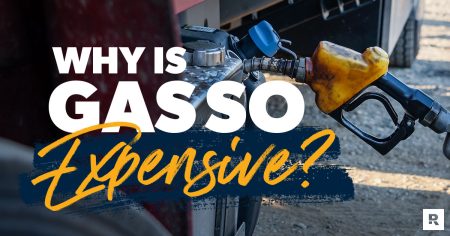If you’re a small business owner looking for financing options, you may have come across the term “SBA loan.” But what exactly is an SBA loan?
In this blog post, we’ll dive into the details of what SBA loans are, the pros and cons, and how to apply, while helping you understand if getting an SBA loan is the right option for your business.
What is an SBA loan?
Small Business Administration (SBA) loans are government-backed loans designed to help small businesses access the funding they need to start, grow, or expand their business.
SBA loans are partially guaranteed by the SBA, making them less risky for lenders, and therefore, more accessible to small businesses. These loans are not directly provided by the SBA, but rather through participating lenders such as banks and credit unions.
How do SBA loans work?
Unlike traditional loans where the lender assumes all the risk, an SBA loan is backed by the government.
This means that if a borrower defaults on their loan, the SBA will partially reimburse the lender for their losses.
This guarantee reduces the risk for lenders and encourages them to provide loans to small businesses, even if they have lower credit scores or less established financial histories.
Types of SBA loans
There are several types of SBA loans available, each designed for different purposes and needs of small businesses.
Here are the most common types:
SBA 7(a) loans
SBA 7(a) loans are the most common and flexible type of SBA loan. They can be used for a wide range of business purposes, such as working capital, equipment purchases, real estate, and even refinancing existing debt. The maximum loan amount for an SBA 7(a) loan is $5 million, and terms can extend up to 25 years for real estate and up to 10 years for working capital or equipment. With the SBA guaranteeing up to 85% of the loan, lenders are more willing to approve businesses that might not qualify for traditional loans.
SBA 504 loans
SBA 504 loans are specifically designed to help small businesses purchase major fixed assets such as machinery or real estate. These loans are provided through Certified Development Companies (CDCs), private, nonprofit corporations set up to contribute to the economic development of their communities.
The SBA 504 loan program allows businesses to finance up to 90% of the purchase price, enabling them to preserve cash for operational expenses. The maximum amount for an SBA 504 loan is also $5 million, and the maturity terms can be for 10, 20, or 25 years. The benefit of an SBA 504 loan is that it offers long-term, fixed-rate financing, making it a more affordable option for businesses looking to make major investments.
SBA microloans
The SBA microloan program provides smaller loan amounts for businesses that need just a small injection of funds. These loans are designed to help startups, microbusinesses, or non-profit child care centers with their various needs, whether it’s working capital, inventory, supplies, or equipment. The maximum loan amount under the microloan program is $50,000, but the typical loan size is much smaller, often averaging around $13,000.
The exact terms of the loan depend on how much you borrow, what you’ll use the loan for, and your own financial circumstances. However, the maximum repayment term for SBA microloans is six years. This type of SBA loan is unique in that it is provided through non-profit community lenders who also offer business training and technical assistance, making it a comprehensive package for first-time entrepreneurs and small business owners.
SBA disaster loans
SBA disaster loans are designed to provide financial support to businesses, homeowners, and renters affected by declared disasters. Unlike other types of SBA loans, disaster loans are directly funded by the SBA, not through lenders. They offer low-interest, long-term loans for physical and economic damage caused by a declared disaster.
Businesses of all sizes, homeowners, and renters can apply for a physical disaster loan to repair or replace damaged property, while businesses and non-profit organizations can apply for an economic injury disaster loan to help meet working capital needs caused by the disaster. The maximum loan amount is $2 million, and the repayment terms can go up to 30 years, depending on your ability to repay the loan. The SBA will determine the loan amount and term based on each borrower’s financial condition.
SBA loans vs. conventional loans
Since SBA loans are government-backed, there are a few specific differences to call out relative to conventional loans.
- You can qualify with a much younger, riskier business profile. Conventional loans typically require at least 6 months of time in business, whereas SBA loans work with eligible startups. Since lenders shoulder less risk from the actual loan, they’re willing to take on more risk from the lender.
- SBA loan amounts are capped at $5.5 million. Conventional loans don’t have defined limits, and can vary more greatly.
- SBA loans have a longer approval time. Since you have to meet requirements for both the lender and the government, approval can take more than 30 days. For conventional loans, approval can happen in just a few days.
- SBA loans have capped interest rates. While SBA loans may not offer the lowest possible interest rates, they keep the ceiling of interest lower than conventional loans.
Pros and cons of SBA loans
The pros
Some of the major advantages of SBA loans include:
- Capped interest, assuring fair rates for new businesses
- Longer repayment terms, making it easier to manage cash flow
- Ranging loan amounts, offering flexibility for different business sizes
- Broad business eligibility
Keep in mind that the interest rate and terms of an SBA loan may vary depending on your personal credit history, business financials, and the type of loan you apply for.
The cons
Some of the potential disadvantages of SBA loans include:
- Longer application and approval processes due to the involvement of the government in guaranteeing the loan
- Collateral may be required without a strong credit score
- Additional costs, such as packaging fees or maintenance fees, may be involved
How to get an SBA loan
Is it hard to get approved for an SBA loan?
Given the combination of personal and business requirements, it’s moderately difficult to get approved for an SBA loan—not easy, but not overly difficult.
A large part of the approval process revolves around your personal history and available financial resources.
How to get approved for an SBA loan
To qualify for an SBA loan, you must meet the following requirements:
- Your business must operate in the US and be legally registered
- Your business must fall under the SBA’s definition of a small business
- You must have invested your own time and money into your business before seeking outside funding
- You need to have a good credit score (typically above 680) and a solid financial history
- Collateral may be required, depending on the type of loan you apply for
How long does it take to get approved for an SBA loan?
The timeline for approval can vary depending on the type of loan you apply for and the lender’s processing times.
Typically, the application process can take anywhere from one to three months (30 to 90 days), while the funds can take an additional one to two weeks to be disbursed.
How to apply an SBA loan
To apply for an SBA loan, follow these steps:
1. Make sure your business is eligible.
Before applying for an SBA loan, it’s important to note that your business should have been operational for a reasonable period of time. While the SBA doesn’t set a specific length of operation requirement, many lenders prefer businesses to have been in operation for at least two years.
This is to ensure that your business has a proven track record and demonstrates stability and the ability to generate consistent revenue.
In terms of credit score, a personal score of at least 680 is generally preferred by most lenders. This high credit score showcases your reliability and ability to repay the loan.
Regarding the industries eligible for SBA loans, they cover a broad spectrum. From retail and wholesale to manufacturing and service industries, almost any type of business qualifies, as long as it meets the SBA’s small business size standards and the business operates for profit.
It’s crucial, however, that the business is not involved in any illegal activities as defined by the Federal and State laws.
2. Determine which type of SBA loan is right for your business.
Understanding your business needs and learning about the different types of SBA loans available is critical to determining the right type of SBA loan for your business. Each loan type offers unique benefits and is designed to support different kinds of business needs.
For example, if you need to finance a significant purchase like real estate or heavy machinery, an SBA 504 loan could be an excellent choice.
If you require smaller loan amounts for general purposes like working capital or inventory, an SBA microloan might be best suited.
If your business has suffered from a declared disaster, you might consider an SBA disaster loan.
3. Gather all necessary documents.
It’s critical to prepare and gather all necessary documentation ahead of time. This includes fundamental business and financial documents such as your business plan, personal and business income tax returns, personal and business bank statements, and a balance sheet. You’ll also need to provide financial projections, ownership and affiliations, business license, loan application history, and business lease.
Each lender might have different requirements, so it’s essential to check with your lender for a complete list of documents needed. This step is time-consuming but crucial, as missing documents can delay your loan approval process.
4. Find an SBA-approved lender in your area.
Your next step is to find an SBA-approved lender in your area. This could be a traditional bank, a Community Development Company (CDC), or a microlender. The SBA has a free online Lender Match tool that can connect you with participating SBA-approved lenders within 48 hours.
When choosing a lender, consider factors such as their SBA loan expertise, the types of businesses they typically work with, and their understanding of your industry. Building a relationship with your lender can be beneficial, as they could provide valuable guidance throughout the loan application process.
5. Submit your application.
After you’ve gathered all necessary documentation and found an SBA-approved lender, it’s time to apply.
Your lender will guide you through the application process and help you submit all required documents. Be ready to demonstrate your business’ ability to repay the loan and provide detailed information about how you plan to use the loaned funds.
What happens to an SBA loan if your business closes?
Sometimes it happens—your business closes. In that case, what happens to your SBA loan?
Like any other loan, you need to continue making payments, or else you’ll go into default, where lenders can begin to seize collateral.
The SBA does compromise in some cases. Via their Offer in Compromise (Form 1150), businesses that default on their loan are able to apply for a settlement of a lower amount if paid in full more immediately. In this case, the loan is considered paid off.
Generally, the most important thing to keep in mind—you’re responsible for the money owed to the lender no matter what.
SBA loans can be an excellent financing option for small businesses looking to grow or sustain their operations. With an understanding of your requirements, you can begin to search for an SBA lender today.
Quickly compare loan offers from multiple lenders.
Applying is free and won’t impact your credit.
Information provided on this blog is for educational purposes only, and is not intended to be business, legal, tax, or accounting advice. The views and opinions expressed in this blog are those of the authors and do not necessarily reflect the official policy or position of Lendio. While Lendio strives to keep its content up-to-date, it is only accurate as of the date posted. Offers or trends may expire, or may no longer be relevant.
Read the full article here










